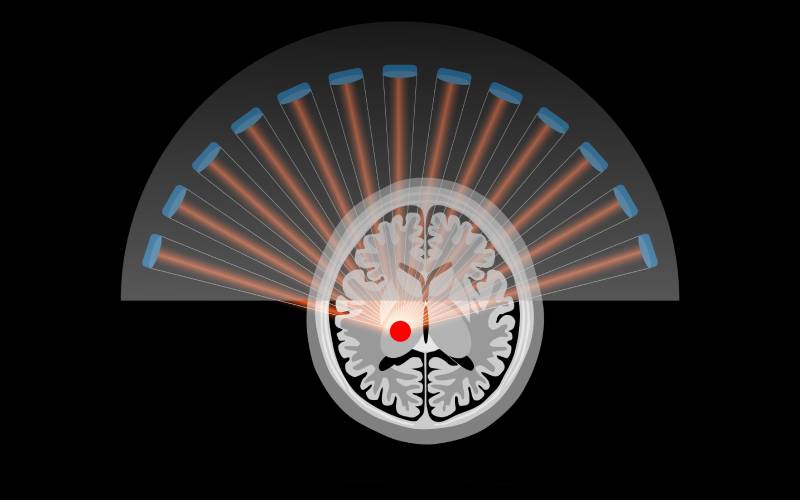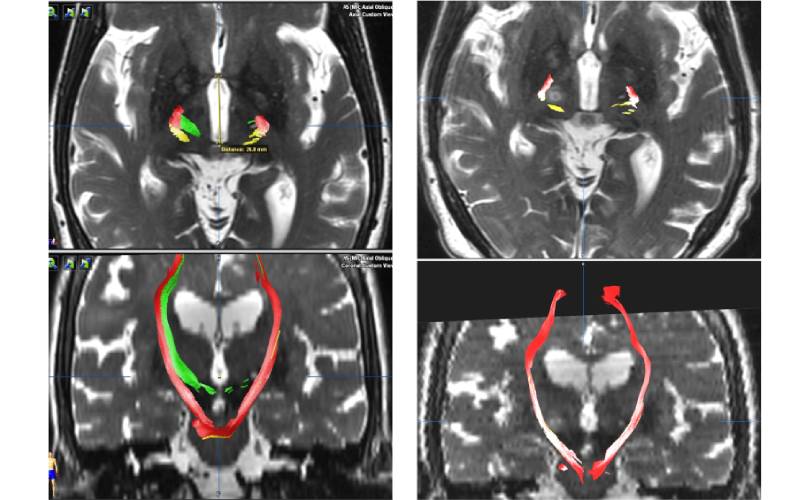Essential tremor is one of the most common movement disorders, affecting approximately seven million adults in the U.S. The disorder is more common in older adults and produces rhythmic shaking that can affect the hands, head, trunk, and voice. Magnetic resonance-guided focused ultrasound (MRgFUS) thalamotomy, which uses ultrasound beams to ablate the ventralis intermedius nucleus of the thalamus, has been an effective approach for reducing tremors in the dominant hand but does not provide complete relief for patients with bilateral symptoms.
Recognizing the need to provide effective treatment options to patients with bilateral essential tremor, Michael G. Kaplitt, MD, PhD, executive vice chair of neurological surgery and director of movement disorders and pain neurosurgery at NewYork-Presbyterian and Weill Cornell Medicine, and Gordon H. Baltuch, MD, PhD, co-chief of functional neurosurgery at NewYork-Presbyterian and Columbia, collaborated on a new research study evaluating the safety and efficacy of a staged, bilateral approach to MRgFUS thalamotomy among adults who had previously undergone the procedure unilaterally.

MRgFUS thalamotomy uses ultrasound beams to ablate the ventralis intermedius nucleus of the thalamus.
Below, Dr. Kaplitt and Dr. Baltuch share results from the recent multicenter clinical trial and its implications for clinical care.
Impact of Essential Tremor
Essential tremor is the most common movement disorder that most people have never heard of before. Everyone knows about Parkinson’s disease, but essential tremor is actually ten times more common and oftentimes the tremors are not as obvious because they only occur when patients are moving. That’s why essential tremor often hides in the shadows unless it is severe. In terms of functionality, essential tremor affects pretty much every activity you can imagine that involves using your hands, including using most of the technology we consider essential in today’s world, from computers to mobile phones.
Dominant Hand Bias
Historically, in patients who are not responding adequately to medication, and where the tremor is affecting their functionality, we would intervene surgically on their dominant hand either through the use of deep brain stimulation or more recently with MRgFUS thalamotomy. Even though most patients have bilateral symptoms, the thought was that functionality could still be significantly improved by reducing tremors in the dominant hand. We’ve been successful in treating essential tremor in the dominant hand using MRgFUS, but that approach is not sufficient for patients with bilateral symptoms.
When we first started doing ablation for essential tremor before MRgFUS was developed, the technology was not what it is today. At that time, we would insert a probe and heat it up, but we weren’t exactly sure of what we were ablating or where the probe was. We knew that the tremor in the dominant hand got better but we didn’t know how much of the area we were ablating. The concern was that by ablating the same structure on both sides of the brain, there could be a substantial increase in side effects due to inadvertently ablating portions of nearby structures on both sides, and that the permanent nature of ablation could limit the possibility of recovery from such problems.
Now, with the advancements in MRgFUS, we can visualize and precisely ablate the ventralis intermedius nucleus of the thalamus and see what’s happening in real time. We can do multiple rounds of heating at progressively higher temperatures, and we can see the amount of tissue and the shape of the tissue that’s being heated and can make adjustments as needed, all to avoid impacting nearby structures and causing debilitating complications. Therefore, we hypothesized that we could safely address the ongoing tremor patients experienced after the unilateral approach with a bilateral, staged approach.
Trial Outcomes
We led a multicenter trial that treated 51 patients with staged, bilateral MRgFUS thalamotomy and followed them for 12 months to assess tremors and potential changes in speech and gait. All patients who were part of the trial had undergone the unilateral procedure at least nine months prior.
Overall, we found that bilateral MRgFUS thalamotomy was effective and can be performed safely. The bilateral procedure significantly reduced tremors in the limbs, head, and voice, and reduced overall tremor-related disability. Adverse events with the bilateral procedure were similar to what we have seen with the unilateral operation and were generally mild and transient. Importantly, we saw functional disability improvement of 73% in the study among a patient population that had already achieved improved functionality from their prior unilateral procedure. It was striking to see this additional improvement from patients who already had long-term stable control of the tremor in their dominant hand.

Axial and coronal images from (L) before bilateral treatment and (R) after the procedure. The green is the target of the MRgFUS ablation whereas the red and yellow portions are nearby structures. After treatment, the nearby structures remain untouched, showing that the brain was successfully ablated bilaterally without affecting nearby structures.
Based on the data from this study, the U.S. Food and Drug Administration approved the MRgFUS surgery system for bilateral use. Since then, we have been able to offer this procedure to more patients and have seen the same types of improvements outside of the trial setting. For most patients with essential tremor, bilateral MRgFUS thalamotomy is now the standard of care unless they are unable to receive focused ultrasound, are unable to have an MRI, or refuse an ablative procedure.
Next Steps
NewYork-Presbyterian has been a leading center in focused ultrasound for the brain since its inception. We were very early pioneers in the clinical application for our patients and now we can build on that experience to treat patients bilaterally and significantly improve their quality of life with MRgFUS. We anticipate that we will begin to investigate whether we can safely shorten the interval of time between the unilateral and bilateral procedure to something shorter than nine months. There are potential benefits for patients if we could safely do this in a shorter time interval. Additionally, the regulatory approval of staged, bilateral MRgFUS thalamotomy opens the door to potential applications in other areas of the brain, such as Parkinson’s disease.





